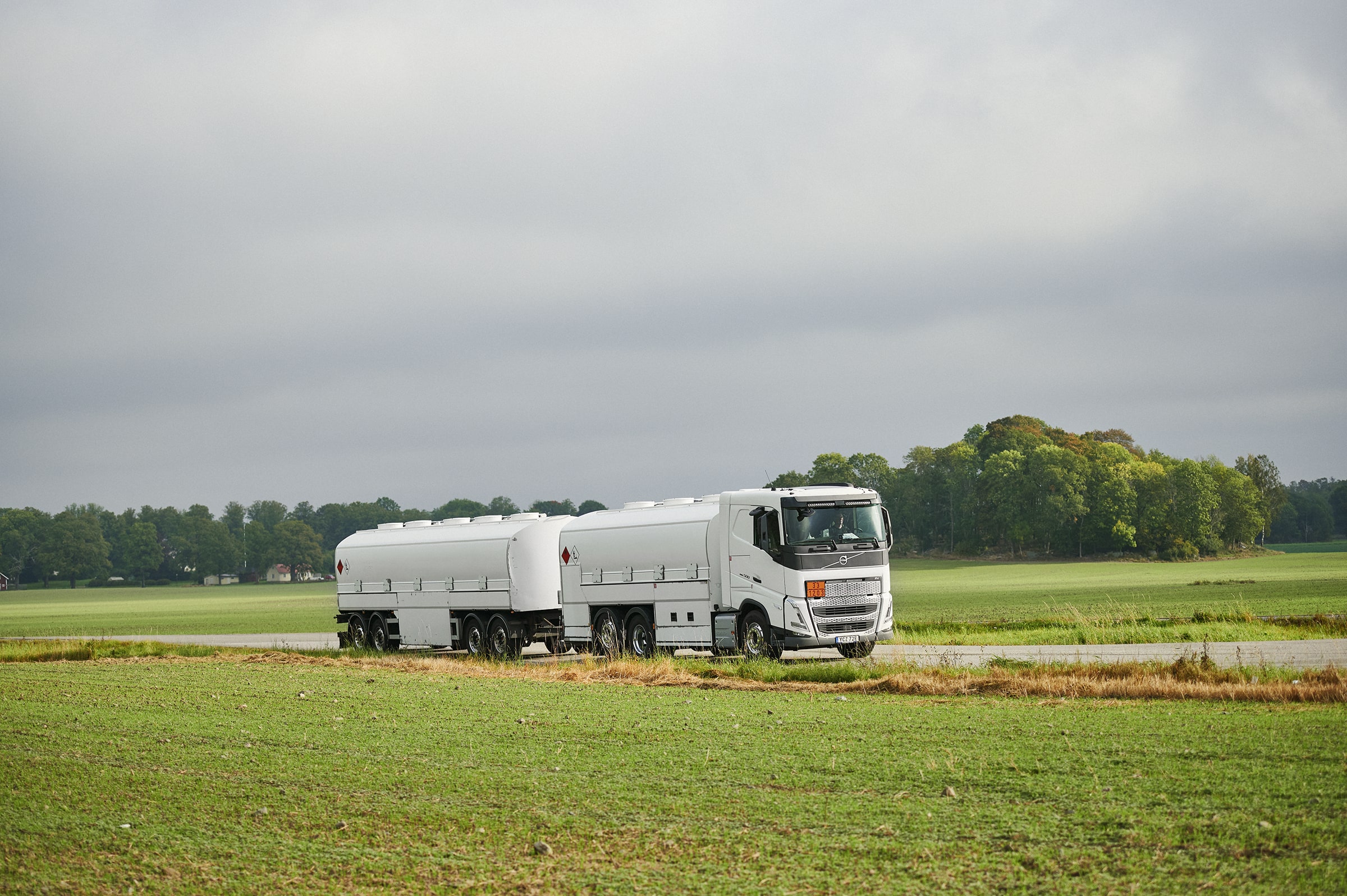The 3 benefits of Autonomous Inventory Routing (AIR)
What are current AIR platforms, based on a new generation of algorithms, capable of and what’s in it for fuel companies and retailers?
In a previous blog I described some ways in which I believe AIR is transforming logistics. But it’s always good to be on the lookout for fresh perspectives. So when someone shared a recent article with me outlining 8 ‘key logistics trends that are set to shape the industry in 2024’, I was naturally triggered. Not only to see if I had missed out on any trends, but especially to see how many of these trends can be managed or accelerated by the adoption of Autonomous Inventory Routing. The answer: AIR ticks (nearly) all the boxes. So - with a nod to author Kinga Edwards at eCommerce Germany – let me run you past these trends one by one.
“To remain competitive, logistics firms must adopt agile practices”, that enable resources to be “quickly reallocated based on real-time needs”. Well, the ability to reschedule fuel transports in real time is at the very core of the AIT concept. Our BX solution is all about making agile decisions based on a vast amount of real time data. Instead of drawing up a fixed delivery plan one day in advance, an AIR solution generates a provisional plan that can be finetuned and adapted in real-time, responding to all kinds of variables, from fluctuating prices at depots to unexpected peaks in demand at retail outlets or traffic congestion. And thanks to automated data flows and direct communication with drivers on the road, this will require minimal intervention from delivery planners.
One way of doing so, the report says, is to use tools for repetitive tasks, which will “free up human resources for more complex roles”. AIR does just that. Although I would argue it doesn’t just relieve people of repetitive tasks; it’s much faster at performing them as well. It can run through many more scenarios in much less time than human planners, and may in many cases arrive at a better solution than even the most experienced human planner could have conceived. Based on our initial experiences with BX we estimate that by leaving routine planning decisions to AIR, human planners can oversee twice as many delivery trucks. This does indeed free them up for more complex roles, such as managing incidents and liaising with customers and suppliers. And AIR does not just help tackle labour shortages in the planning department. By optimizing route planning, we have found it can create efficiency gains of up to 10% in the required number of trucks – and drivers.
At first glance, this seems slightly less relevant: it’s about the fact that logistics has the “third-highest automation potential” of any sector, but companies are hesitant to “fully embrace” the required investments, notably robotics. In fuel delivery logistics, however, the scope for robotics or automated handling is limited for now. Fuels need to be transported from a depot to fuel stations, and for the foreseeable future this will require the same trucks and drivers that the sector has relied on for years. And the implementation of AIR? That is relatively straightforward and risk-free: in most cases it will mean replacing older, locally hosted software with a more powerful platform. And if that platform is a fully managed, cloud-based SaaS solution such as BX, I would say that instead of creating more complexity, it simplifies things. If there is any complexity involved in rolling out AIR, it’s in making sure the platform is fed with the right data. And that brings me to the next trend listed in eCommerce’s report:
An AIR solution will only be as effective as the quality of the data it works with and the frequency with which it receives new data. Fortunately, there is a huge amount of data to work with. Many fuel tanks have already been fitted with sensors, enabling the system to keep an eye on inventory levels in (almost) real-time. We can establish links to data feeds to include real-time data on fuel depots, from current stocks to waiting times and pricing. We can include data on any pricing arrangements or annual volumes that have been agreed with suppliers. Then there is data on the availability of trucks and drivers, the current location of trucks and the volumes of fuel they are carrying, and traffic conditions. Preparing all these data flows will take some initial work, but once in place, they will save considerable amounts of time and expense.

AIR software makes it easier than ever to make sustainability part of the planning equation. In its existing form our BX solution optimizes delivery routes in several smart ways: by choosing the best depot, figuring out how much to load, and by planning optimal routes to ensure the same amount of deliveries can be handled while driving fewer miles. This already reduces the carbon footprint of deliveries by up to 10%. And that’s with the current, mostly fossil-fueled fleet of delivery trucks. However, over the next few years, we can expect electrification of haulage to pick up speed. And that’s when AIR will become even more crucial. It can take into account charging times, making sure they line up with mandatory rest periods for drivers, and even consider the charging speeds at different points along the route. In other words, AIR can be an enabler of electrification, by alleviating some of the concerns around the feasibility of electric trucks that may now deter logistics companies from going electric.
An interesting idea. Although currently we have no plans to integrate blockchain technology in our AIR solution, it could be an interesting proposition for the long term. It can provide additional guarantees of data integrity. After all, once data is recorded on a blockchain, it cannot be altered or deleted. Blockchain could also enable real-time tracking and verification of goods and information across the entire supply chain, and blockchain-based smart contracts could automate all kinds of related processes, such as payments and compliance checks. However, blockchain adoption requires the support and active participation of multiple stakeholders across the supply chain. And while I’d love to explore the business case for doing so as a sector, it’s not something that will take off overnight.
It will come as no surprise that AI is currently the main driver of innovation, by some distance. Autonomous Inventory Routing itself is a prime example of this, as the initial decision-making is delegated to algorithms. And as outlined in some of the preceding paragraphs, these do indeed “boost efficiency in event-based workflows by eliminating human intervention”. How exactly they do that is a fascinating question. One best reserved for another blog, perhaps by someone in my company with more in-depth knowledge on the subject than I have. Suffice it to say that we have only just begun to explore the opportunities afforded by artificial intelligence. Right now our BX solution mainly analyzes huge datasets and works out the most optimal combinations in a matter of seconds. The next step will be to refine its forecasting abilities. By developing new neural networks, we expect to be able to predict demand at fuel stations with even greater accuracy, based on variables ranging from weather forecasts to large events, historical consumption patterns, pricing, and any combination of these. And perhaps most importantly: we can and will use AI to improve and refine our existing algorithms.
If you read the eCommerce article, you will have noticed that I skipped one trend – and that only because it focuses on e-commerce and online shopping, which is a fundamentally different branch of logistics from the multi-drop VMI settings we specialize in. So for all I know, there may be applications of AIR in this field as well (and if you know of any, please let me know!) Still, that leaves us with a very respectable score of seven trends out of eight in which Autonomous Inventory Routing can help fuel delivery logistics professionals align with major trends, meet demands and seize opportunities.
Any thoughts or questions you want to share? Drop me a line at info@bottomline.eu. For more background on the concept and implications of Autonomous Inventory Routing, make sure to download our ebook.

What are current AIR platforms, based on a new generation of algorithms, capable of and what’s in it for fuel companies and retailers?

Professor Hein Fleuren has supported Bottomline in the development of its BX algorithm. We asked him to give us a look behind the scenes.

From fuel to industrial gas, animal feed, and waste collection: Autonomous Inventory Routing is transforming logistics. Find out how.